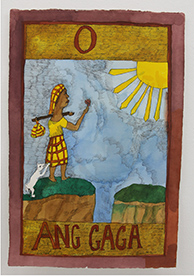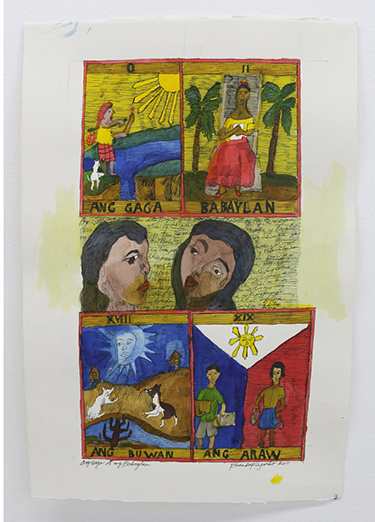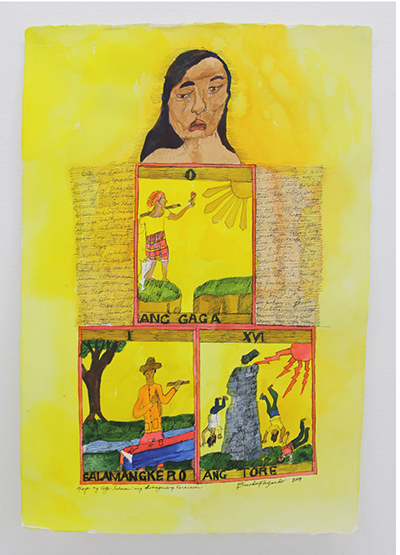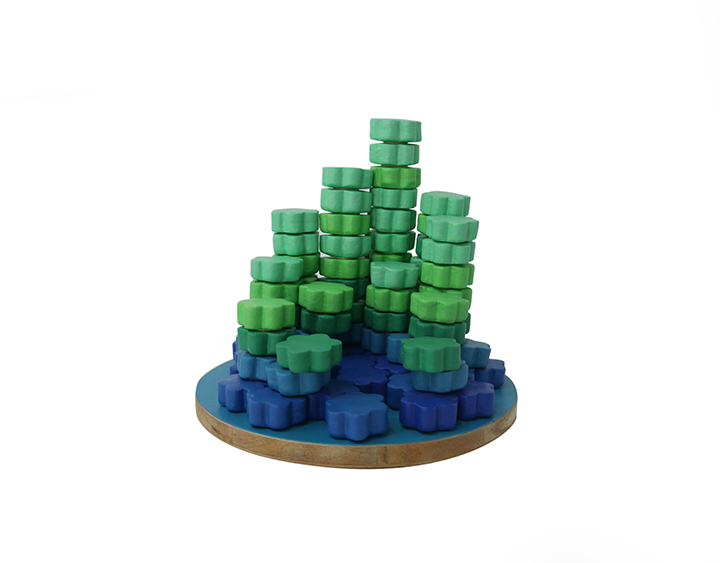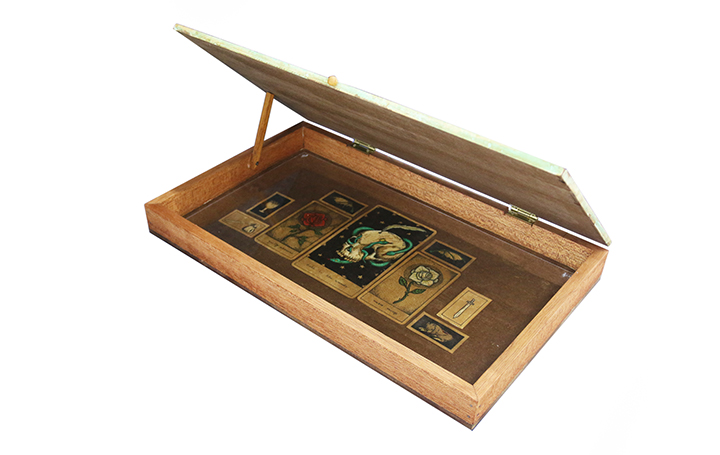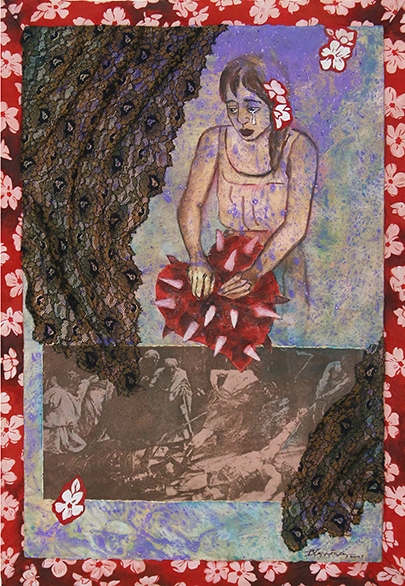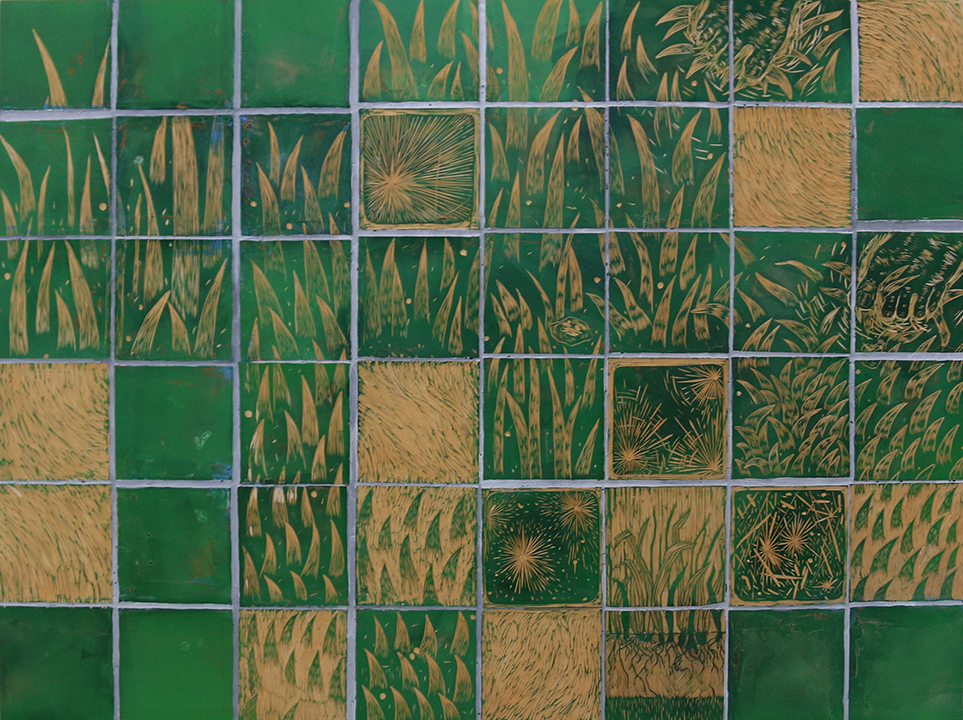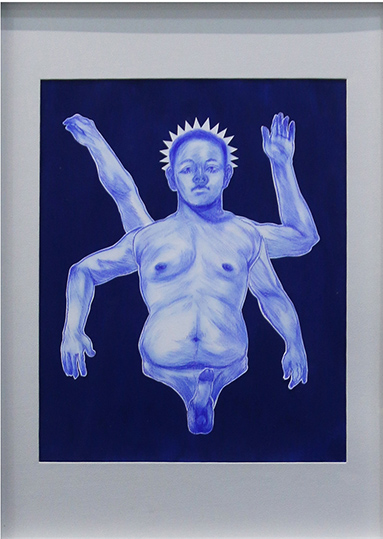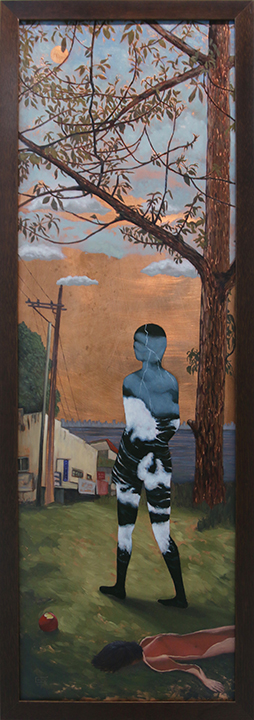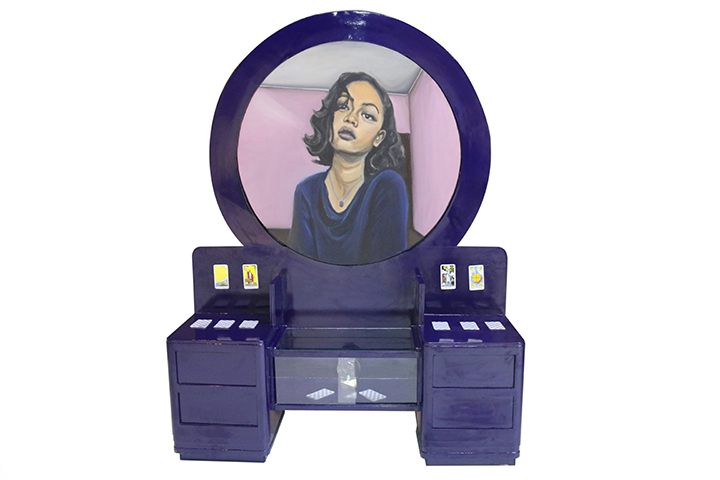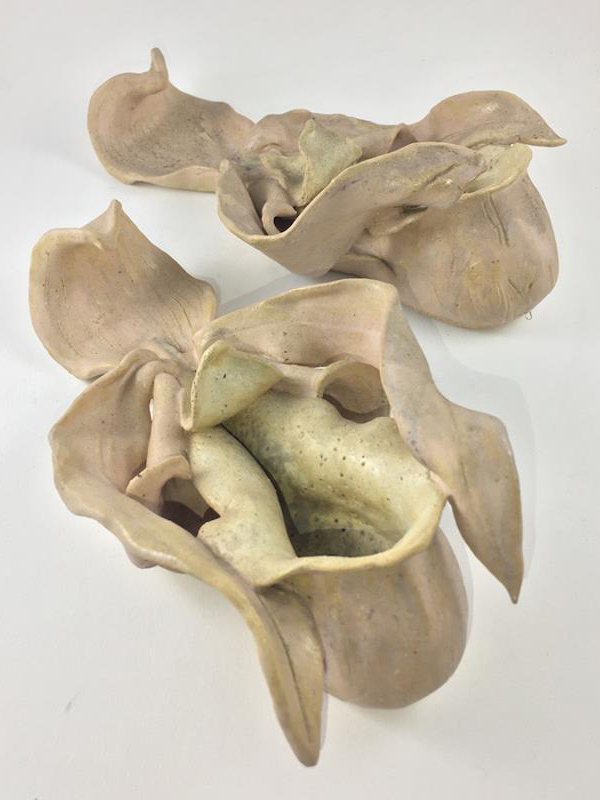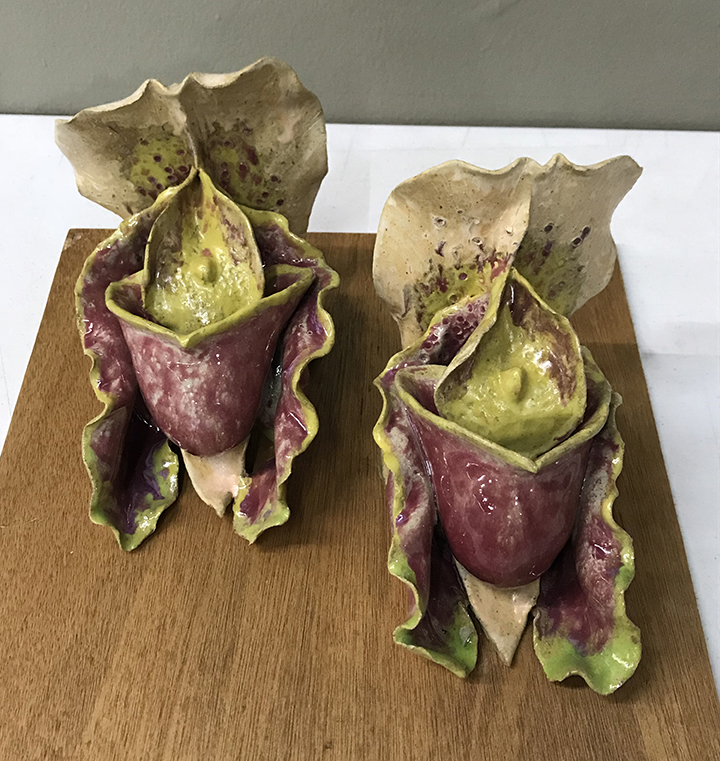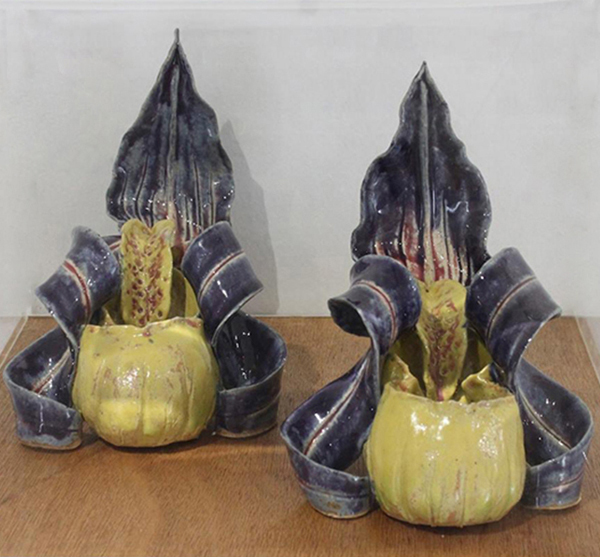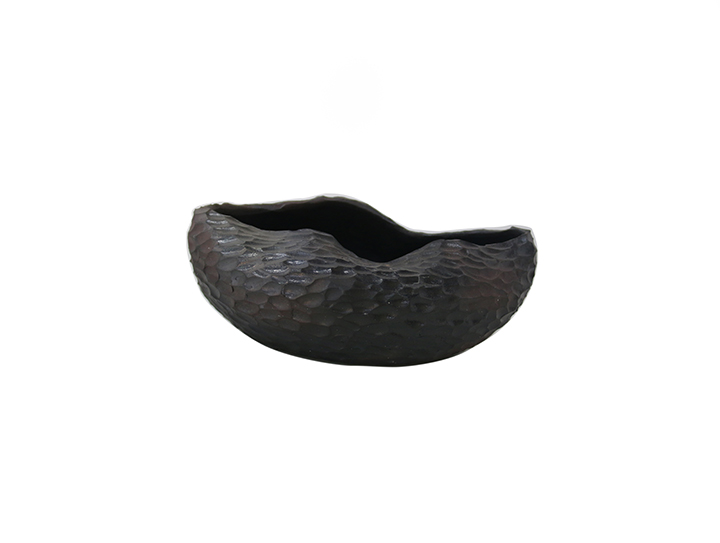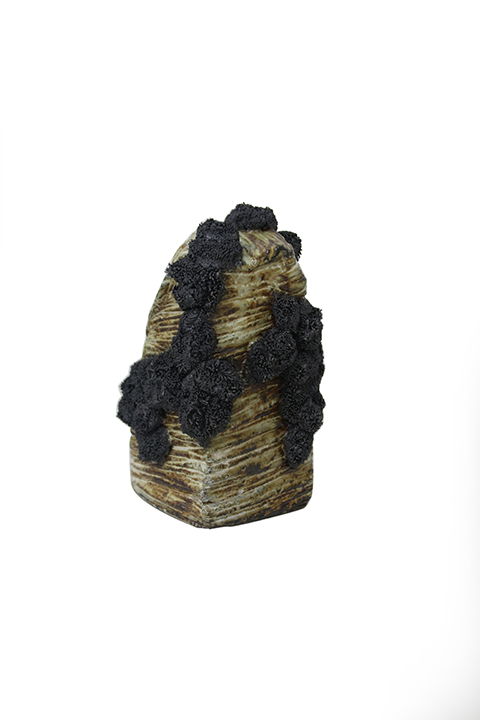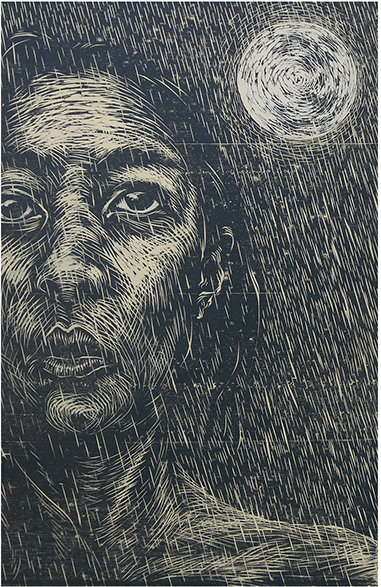Fool’s Journey
Ioannis Sicuya
The Trickster. The Jester. The Madman. The Beggar. The Excuse. These are some of the other names which the Tarot card The Fool is also known as; and while there is a tradition that dictates how this card is illustrated and read in divination, as with the rest of the cards of the Tarot, The Fool’s imagery and symbolism is “open for interpretation” and throughout history artists have given The Fool different faces and with it various meanings.
Brenda V. Fajardo is one of the more well-known local artists who first incorporated the images of the Tarot in her works, using them to raise issues of both the cultural and the individual. In one interview1, she reveals that her favorite card is The Fool, translating it in Filipino as Ang Gaga (giving it a feminine attribute as compared to it traditionally being a young man). For Fajardo, Ang Gaga is both a personal symbol and represents “the fact that women can aspire towards and to some extent control their destiny instead of just accepting the circumstances that pull them down.” Fajardo has since produced a number of variations on the subject.
Inspired by Fajardo’s approach, this exhibition aptly titled ANG GAGA, gathers artists of diverse disciplines and asks them to translate The Fool into their individual visual language. The artists were also asked “how does one perceive new beginnings or change?”
Echoing Fajardo’s process of reimagining the image of The Fool, Jef Carnay and Lee Paje’s works nevertheless ultimately tackle divergent themes in their renditions. In The Sly and The Fool, Carnay dissects The Fool’s image into smaller components, assigning meaning to each through a form similar to flashcards then recombining them to create a new narrative that is personal as well as relatable. Paje’s painting in copper titled Bare, on the other hand, pushes the transformation of The Fool further from masculine to feminine to becoming altogether genderless in pursuit of freedom from normative concepts of identity.
Other works in the exhibition can be viewed as representing what is known in cartomancy as “The Fool’s Journey”, the story of the fool traversing across the mysteries of life. Ambie Abaño and Gab Ferrer’s works depict The Fool in transit against the background of her immediate environment. Abaño’s woodcut print titled Ang Buwan at ang Gaga sa Ulan ng Tag-init places the fool in the middle of a summer rain shower, which symbolically parallels the attribute of the fool as an entity in transition. While in Ferrer’s work titled And Each of It has a Different Shade, the travelling fool crosses what seems to be a watery pathway which also reflects the sky, perhaps a nod to the mystical saying “As above, so below”. Celeste Quilantang’s repurposed boudoir installation also pertain to The Fool’s Journey but through time. In this piece, titled Ang Gaga at ang Kanyang Kwentong Paglalakbay, Quilantang represents the past, present, and future all at the same time as a form of self-reflection to what is, what was, and in preparation as to what could be.
In the context of the Fool’s Journey, Bea Alcala and Katti Sta. Ana’s works can be interpreted as representations of the tools needed by the fool in her travels. Alcala’s plaster sculptures which she calls Tore ng Bulalakaw (Tower of Shooting Stars) and Tore ng Sibol (Tower of Blooms) approximate the shape of the star inside the mystical image of the pentacle, one of the suites in Tarot that also call to mind the time when people used the stars to navigate the landscape. Alcala confides that accumulating the pieces, for her, is progression in the right direction. Travelling also entails the need for footwear which Sta. Ana’s Orchidelirium series figuratively provides. Her stoneware sculptures are shaped liked the lady slipper orchids the forms of which she got from her flora research. According to the artist, her fascination with the peculiar form of the flower stems from her family’s history in the shoe-making industry.
Continuing with the theme, the works of Ginoe and Jezzel Wee points to the unease and uncertainty one can feel when undergoing a major change, or in The Fool’s case, a life-changing journey. Ginoe emphasizes the feeling of disorientation by rendering the image of the compass rose and the form of the directional arrows on a signpost implied by his drawn figure’s limbs then juxtaposing them with contrasting titles such as Salangisag (disorderly) and Alaplaag (scattered). Wee, in turn, attempts to physically translate what one feels on an emotional, mental level when in transitional phases through her works Pasmado and Kalyo. She utilizes textures and repetitive details in her ceramic works to evoke, revulsion, disgust, unease or mild curiosity.
Finally, Imelda Cajipe-Endaya and Julie Lluch’s works designates the fool as a representation of those who are struggling in one form or another, more specifically, the struggles experienced by women. Cajipe–Endaya’s works are “a discourse on male art, normatively referred to as masterpiece, and women’s art and craft which have largely remained invisible in art history until recent times”. She juxtaposes the image of Juan Luna’s Spoliarium with images of works by Filipina artists, giving both equal footing on the same pictorial plane, implying that both can be of equal worth. Lluch’s sculpture titled Susanna and the Elders is a depiction of a story found in the book of Daniel wherein a woman named Susanna was falsely accused by elders who want to sexually abuse her. Lluch chose the scene in which the lustful Elders and savage beasts prowl around her unprotected body. Susanna represents the fool in this scenario not because she is oblivious or ignorant but because her innocence, in every sense of the word, is threatened.
Fajardo shares that she “simply took the emblem of the fool and turned it to a woman” and that” it does not represent a negative view” Indeed, despite the negative connotation in the vernacular of the term Ang Gaga, The Fool is presented in all the artworks included in this exhibition not as an eternal imbecile but as a clean slate to which perspectives can be projected on — naïve but with untapped potential.
1. Towards a Herstory of Filipino Women’s Visual Arts, Cajipe-Endaya, Imelda,
(A paper written for the National Historical Commission of the Philippines (NHCP) for the Roundtable Conference on “Women in History and History of Women” on 27 June 2015.)

